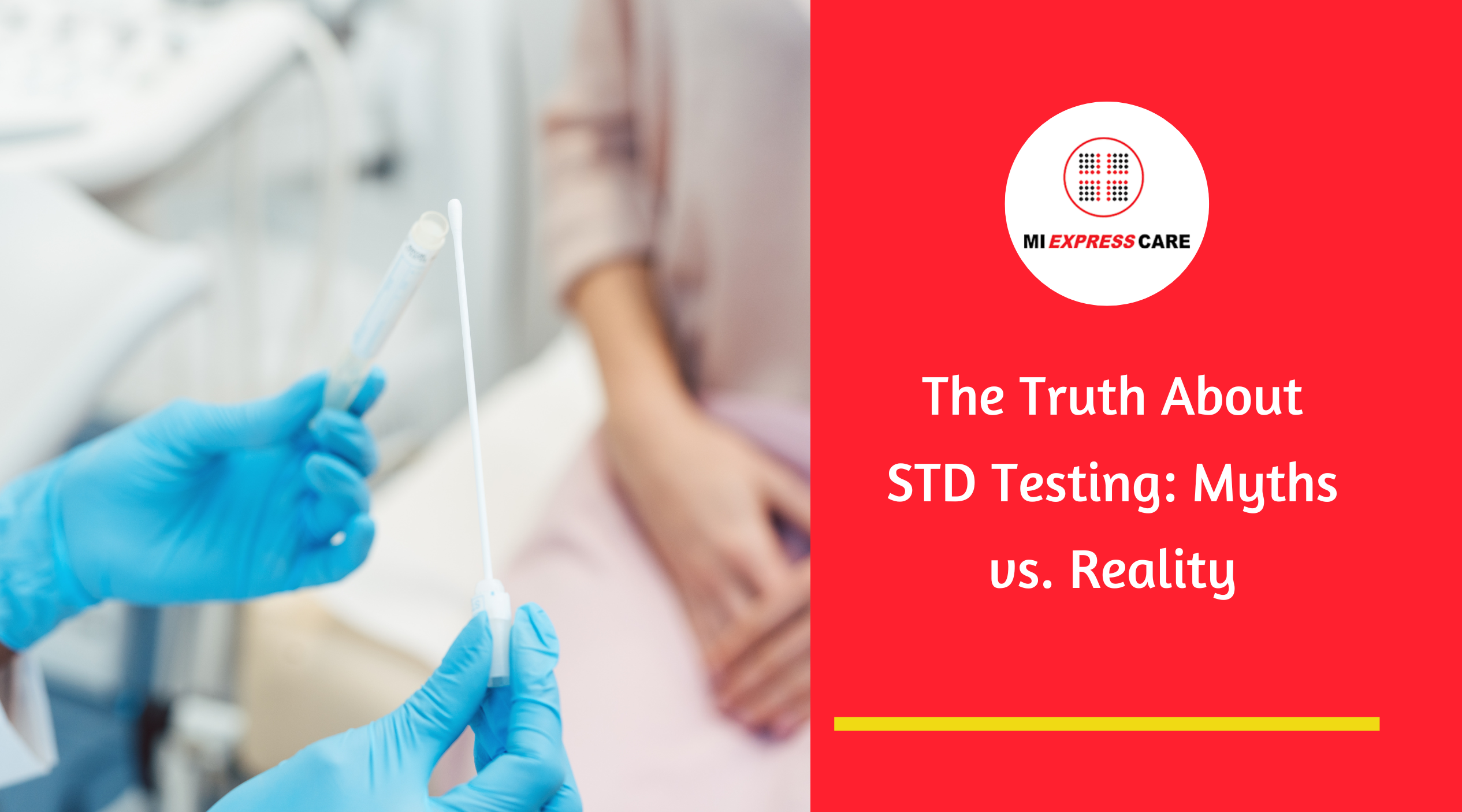


Many avoid STD testing due to misconceptions, believing only symptomatic or high-risk individuals need it or that testing is painful and embarrassing. But here’s the thing: avoiding the topic doesn’t make it disappear. Misinformation and stigma around STD testing keep many people from getting the care they need.
According to the CDC, 1 in 2 sexually active people will contract an STD by age 25, and most won’t realize it until it’s too late. By understanding the truth about STD testing, you can make informed decisions about your sexual health without fear or embarrassment.
Let's begin by dismantling the most pervasive myths that keep people from getting tested.
Reality: Many STDs are sneaky. They don’t always announce their presence with itching, discharge, or pain. Some of the most common infections, like chlamydia and gonorrhea, often show no symptoms at all in the early stages.
Up to 70% of women and 50% of men with chlamydia have no symptoms.
Without treatment, these "silent" infections can lead to serious complications like infertility or pelvic inflammatory disease (PID).
Reality: If you’re imagining painful swabs or giant needles, take a breath, modern STD testing is much simpler than you think. Most tests are quick, easy, and take less than five minutes.
Blood tests (for HIV, syphilis, hepatitis) feel like a quick pinch.
Urine tests (for chlamydia and gonorrhea) are as easy as peeing in a cup.
Swab tests (for HPV and herpes) may sound intimidating, but they're over in seconds.
Reality: STDs don’t discriminate based on your relationship status. You could be in a committed, monogamous relationship and still be at risk if:
Your partner had a previous infection they didn’t know about.
There was infidelity (uncomfortable truth, but it happens).
You or your partner weren’t tested before becoming exclusive.
One unprotected encounter is all it takes. Testing isn’t about judging your choices, it’s about protecting your health.
Reality: While costs vary, STD testing is often more affordable than people assume and sometimes even free.
Many insurance plans (including Medicaid) cover routine STD testing.
Community health clinics and organizations offer low-cost or sliding-scale fees.
Some at-home test kits are available, with options for financial assistance.
Reality: Your last clean test doesn’t mean you’re in the clear forever. The CDC recommends:
Yearly testing for sexually active people under 25.
More frequent testing if you have new or multiple partners.
Immediate testing after unprotected sex with a partner whose status is unknown.
STDs aren’t a "one-and-done" risk. Regular testing keeps you and your partner safe.
Reality: If only it were that simple. Many STDs are invisible, with no rash, no odor, and no warning signs.
HPV (the virus linked to cervical cancer) often has no symptoms until it causes serious damage.
Herpes can lie dormant for years before an outbreak.
HIV may initially feel like a mild flu, then show nothing for years.
Reality: Sure, talking about sexual health can feel awkward, but doctors and nurses aren’t judging you. They’ve seen it all, and their job is to help, not shame.
Clinics use discreet billing and confidential records.
At-home tests let you skip the clinic entirely (just mail in your sample).
View this post on Instagram
The common STD myths often create unnecessary fear, when in reality, modern testing is discreet, straightforward, and medically essential. Understanding that many infections show no symptoms yet can cause lasting harm reveals why testing matters. By separating fact from fiction, you can reclaim control over your sexual health, making informed choices free from stigma or misinformation.
We provide quick & confidential STD testing in Canton and Ann Arbor, MI. You deserve to feel good about your health, and we’re here to help with no hassle and no waiting.
Book your appointment today and feel confident in knowing your status.